The World’s Rarest Birds is an extraordinary bird book.
590 different bird species are classified as Endangered or Critically Endangered, with many species only existing in captivity. A new book, The World’s Rarest Birds, catalogs all of these species. Each species is shown with remarkable color-photography and illustrations. Threats to species habitat are described, population estimates per species are given, and each species has a quick response (QR) code that takes the reader to a species-specific BirdLife International webpage. The book also covers 60 Data Deficient species. Data Deficient means that there exists little to no information on the relative abundance and distribution of the species.
Many of the photos in The World’s Rarest Birds are from a recent prestigious international photographic competition organized by BirdLife International specifically to generate photos for inclusion in The World’s Rarest Birds, and most of these photographs have never been published in a guidebook before. The World’s Rarest Birds also employs the illustration skills of acclaimed wildlife artist Tomasz Cofta to describe 75 species where there are no known photographs in existence.

El Oro Parakeet (Pyrrhura orcesi) © Greg & Yvonne Dean. El Oro Parakeet (Pyrrhura orcesi) population estimate 250 to 999. Threatened by logging, agriculture, and other human activities. Lives near Buenaventura, El Oro Province, Ecuador. Occurs in small flocks and breeds communally in tree cavities. A nest-box mechanism employed by conservationists has helped stabilize the population that resides within a protected area.
No where in the world is without a rare bird: species in The World’s Rarest Birds exist in all geographies and all continents and oceans globally (Table 1: 20 Countries with the Largest Number of Globally Threatened Bird Species and Table 2: Twenty Countries with the Highest Percentage of Globally Threatened Bird Species).
We are the cause of the global extinction crisis for avian friends. If you support conservation, and wish to protect the Earth’s rarest birds, you need to read The World’s Rarest Birds.
INTERVIEW WITH ERIK HIRSCHFELD, co-author with Andy Swash and Robert Still of the The World’s Rarest Birds
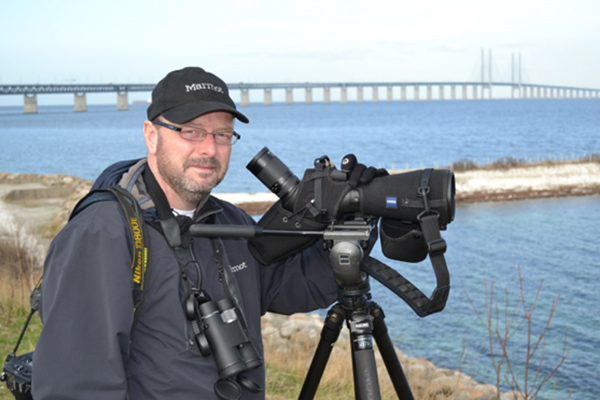
Erik Hirschfeld.
Mongabay: Where did you generate the idea for the international photograph competition to photograph these rarest of the rarest bird species?
Erik Hirschfeld: I came up with it over five years ago when I was writing the Rare Birds Yearbooks. All three of us—Andy Swash, Rob Still, and I—thought it was a good idea to continue with this. The World’s Rarest Birds is a team effort between Andy Swash, Rob Still, and I.
So many good images were published in magazines and the internet and with a digital camera being an essential piece of equipment for most birders, I thought the time was ripe to try out a competition focusing on endangered birds. Surprisingly, it was not just amateurs who contributed, but also professional photographers. The non-commercial cause of the competition contributed to the willingness to upload, and I think knowing that one’s image could help to spread awareness of a species probably helped. And it is always great to see one’s image in print.
Mongabay: How did you get involved in bird watching? As a non-scientist, what is it like to be an international birding expert?

White-bellied Cinclodes (Cinclodes palliatus) © Dubi Shapiro. White-bellied Cinclodes (Cinclodes palliatus) population estimate 50 to 249. Threatened by high-altitude agriculture, harvesting peat,, horticulture, over-grazing, and other human activities. It is from Junin and, Lima, and Huancaveliva, Peru. Lives near Buenaventura, El Oro Province, Ecuador. Lives in rocky terrain 4,400 – 5,000 meters above sea level. Rapid decline and extinction of this species is expected unless human behavior change occurs.
Erik Hirschfeld: It is a hobby from my teenage years. In Sweden, at that time in the mid-70s, kids could join a natural history youth organization called Fältbiologerna, led by youths, which spent much time outdoors. Birding was big in my local club. My father was supportive as he co-founded the society some decades earlier and had had a natural history upbringing. I chose a career in aviation, as I thought I would be freer financially to pursue my interest in birding if I was not a professional conservationist, but I should admit that now I am almost more involved in various birding work than in my professional career. I have always been internationally inclined, having moved around a bit. That is the great thing with birds, regardless of where you live there is always something interesting to look at and study and record.
Mongabay: How hard is it to obtain photographs of some these elusive, rare species? What techniques were used? Were camera traps and other similar techniques used?
Erik Hirschfeld:
I have not taken any photos myself, so here is a general answer. Various techniques have been used, in some occasions camera traps or digiscoping. Important though is that the birds are not disturbed by photographers, for example by nests. Some photos were taken by scientists extremely familiar with the species concerned.
Mongabay: A number of the bird species don’t include photographs because none are available. How does Tomasz Cofta illustrate a bird species with so little to go on?

Black-bellied Puffleg © Murray Cooper. Black-bellied Puffleg (Eriocnemis nigrivestis) population estimate 140 to 180 adults. Threatened by development. It is from near Mindo and western foothills, Volcan Pichincha, Ecuador.
Erik Hirschfeld: Tomasz does not know more about that species than anyone else. A lot of information is in the web, including old illustrations, scientific papers on newly discovered species, photos of museum specimen etc. He has also help to get photos from museum staff from all over the world. To make an illustration of a rare bird he studies many photographs of closely related species, looking for specific postures and the general characteristics of the species group. Then Tomasz sketches a silhouette with appropriate species’ characters according to the descriptions and photos. To make an image more realistic he uses his 35 years of experience of field observations and, above all, of birds in hand (as a ringer). Tomasz has handled over 80,000 live birds of 200 species and has carefully studied their morphology. He has drawn hundreds of technical sketches to document body structure, plumage, and coloration details. The knowledge about finest details of “an average bird” provides him some kind of certainty in painting “the unknown bird”. Tomasz calls his paintings in The World’s Rarest Birds “science-fiction” art. Nevertheless, some are still painted with a big dose of his ornithological imagination.
Mongabay: What type of techniques and software does Tomasz Cofta use?
Erik Hirschfeld: Nothing special—an outdated Adobe Photoshop and 12 years old Wacom digtal drawing tablet. No photograph of any bird was altered to make an illustration. However in few pictures a tree bark texture was taken from his own photos. The rest of every image is created completely artificially.
Mongabay: In the process of this book, does a particular bird stand out to you as a personal favorite?

Lulu’s Tody-tyrant (Poecilotriccus luluae) © Pete Morris. Lulu’s Tody-tyrant (Poecilotriccus luluae) is thought to number around 1,000-7,000 mature individuals in the cloud forests of north-eastern Peru. They are imperiled by deforestation for timber and agriculture.
Erik Hirschfeld: There are many….I am a great fan of the Kakapo (Strigops habroptilus) on New Zealand. The Slender-billed Curlew (Numenius tenuirostris) is another one. I have looked so much for it when I lived in Arabia but never found one. The Spix’s Macaw (Cyanopsitta spixii) is another one, like most parrots fascinating and personal. But there really are too many species to select just one….
Mongabay: If you could save one bird from extinction today, which would it be and why?
Erik Hirschfeld: Any of the vulture species, because they are so importance for taking care of deceased animals and they are significant for human culture (e. g. used for “aerial burials” in south Asia). If they disappear, as we have seen in south Asia, dogs take their niche and rabies spread by dogs will increasingly affect the human population. All species have a role in maintaining the balance of the ecosystems, but it is very significant how the vultures’ declines strike back at us humans.
Mongabay: What do you see as the gravest threats to birds in general worldwide?
Erik Hirschfeld: Farming and fish farming as well as global warming, whatever the causes of the latter is. Introduction of alien animals species and plants also destroy natural ecosystems, which is well documented. Farming destroys natural habitat and attracts pollution through pesticides. Sometimes much-needed food is not grown, rather other produce which can be exported and bring in more income is farmed. All fine for the farmer, but less so for those who do not have farmland and need staple food. Fish farming destroys coastal mudflats and mangroves. I do not mean that we should stop our agricultural practices, but we should think more about which crops we grow, why we grow them and how they can be used locally and not exported overseas.
Mongabay: Can you describe some conservation successes and failures associated with protecting The World’s Rarest Birds?
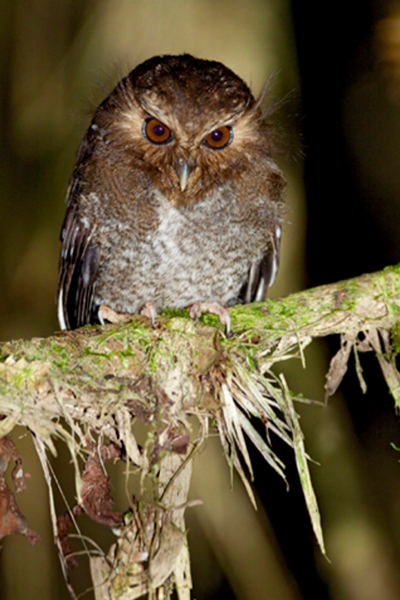 Long-whiskered Owlet (Xenoglaux loweryi) © Dubi Shapiro. Long-whiskered Owlet (Xenoglaux loweryi) population estimates 250 to 999 individuals. Declining due to habitat destruction. Xenoglaux loweryi is known from three localities on isolated ridges in the eastern Andes of Amazonas and San Martín, northern Peru. |
Erik Hirschfeld: Two species, Hawaiian Crow (Corvus hawaiiensis) and Spix’s Macaw (Cyanopsitta spixii) are planned to be reintroduced back into the wild this year. They are extinct from the wild. So even if they are not saved yet, the possibility of reintroducing them would be a great success. A failure that comes to mind is the extinction of the Alaotra Grebe (Tachybaptus rufolavatus) in Madagascar, but I think there are more success stories than failures, at least in this millennium so far.
Mongabay: How can Mongabay.com’s readers help conserve The World’s Rarest Birds species around the world? Do you have suggestions?
Erik Hirschfeld: They can monitor BirdLife International’s website www.birdlife.org and learn about the situation there. Also join the group Critically Endangered Birds on Facebook. Talk to other people about bird conservation, especially if you know decision-makers, and spread awareness of these rare birds. Join the Preventing Extinctions Programme run by BirdLife, get people and ask corporations with funds to become Species Champions, a program run by BirdLife International and a perfect corporate social responsibility cause for a company or individual wishing to do something concrete for our environment. And go and try to see these birds, responsibly, so locals understand they can make money from ecotourists if they protect the birds and habitats.
Mongabay: How do we encourage young people and teenagers to get involved in bird watching? How do we make it fun for them given so many young people suffer from “nature-deficit disorder”?
Erik Hirschfeld: Move part of the birding scene to the internet and social media and make it interesting. Spread the news of what is going on and ask for interaction/reports from other people. Teachers have a big responsibility to get kids out into nature. Focus on the easily accessible birds and start the interest there, feed them in winter if you live in a cold climate, make counts, hummingbird feeders, organize competitions over how many species you can see, build nest boxes, etc. If an interest is founded at an early age, it is quite plausible that the interest will follow in life and affect an individual’s awareness of our avian diversity and the problems our avian neighbors on Earth face.
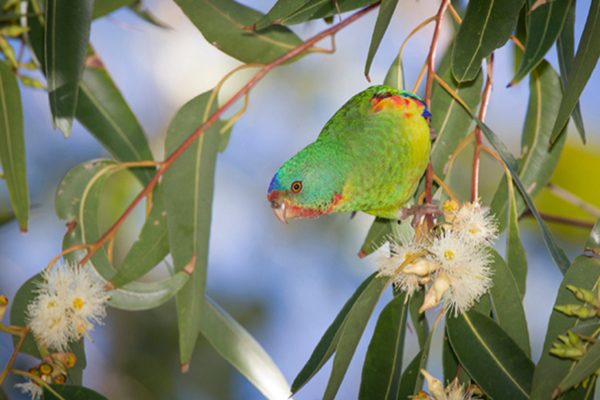
Swift Parrot (Lathamus discolor) © David Stowe. Swift Parrot (Lathamus discolor) population estimate 1,000 to 2,499 individuals. Threatened by development in wintering and breeding ranges in Australia.

Narcondam Hornbill (Aceros narcondami) © Niranjan Sant. Narcondam Hornbill (Aceros narcondami) population estimate at 50 to 249 mature adults. Narcondam Island, India. Threatened by hunting and habitat destruction.
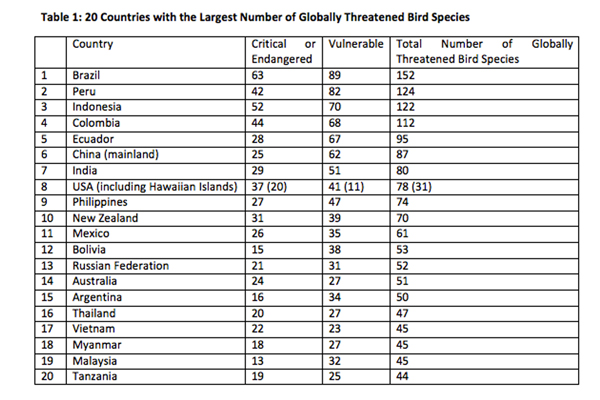
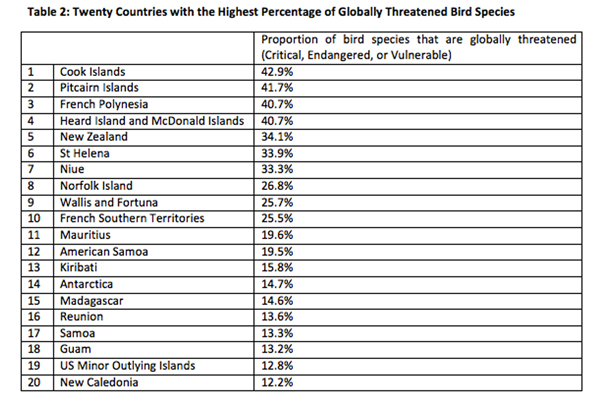
How to order:
Paperback: The World’s Rarest Birds
Publisher: Princeton University Press
Author: Eric Hirschfeld, Andy Swash, and Robert Still
ISBN: 978-0-691-155-968
Gabriel Thoumi, CFA, LEED AP, is a natural resource scientist and financial consultant.
Related articles
World’s rarest duck on the rebound in Madagascar
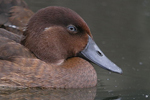
(05/01/2013) After a final sighting in 1991, the Madagascar pochard was thought to have vanished for good. But this diving duck was rediscovered in 2006 when a flock of 22 individuals was found on Lake Matsaborimena in northern Madagascar by conservationists during an expedition. Soon after Madagascar pochard eggs were taken and incubated in a joint captive breeding program by Durrell, the Wildfowl & Wetlands Trust (WWT), the Peregrine Fund, Asity Madagascar, and Madagascar government, which recently announced that the population—both captive and wild—has nearly quadrupled.
Great tits unaffected by warmer springs
(04/26/2013) The population of a widely dispersed bird species is relatively unaffected by warmer springs, indicating that some species may be adapting to shifts caused by climate change, reports a study published in the journal Science.
The Crossley ID Guide: Raptors – book review
(04/22/2013) Richard Crossley, Jerry Liguori, and Brian Sullivan have produced a unique and much needed bird book in The Crossley ID Guide: Raptors. The Crossley ID Guide: Raptors is a book you study at home so you can easily recognize North American raptors.

(04/10/2013) New Zealand’s Department of Conservation (DOC) is facing a backlash over plans to aerially drop a controversial poison, known as 1080, over the habitat of two endangered, prehistoric, and truly bizarre frog species, Archey’s and Hochsetter’s frogs, on Mount Moehau. Used in New Zealand to kill populations of invasive mammals, such as rats and the Australian long-tailed possum, 1080 has become an increasingly emotive issue in New Zealand, not just splitting the government and environmentalists, but environmental groups among themselves. Critics allege that the poison, for which there is no antidote, decimates local animals as well as invasives, while proponents say the drops are the best way to control invasive mammals that kill endangered species like birds and frogs and may spread bovine tuberculosis (TB).
Proposed coal plant threatens Critically Endangered Philippine cockatoo

(04/02/2013) One kilometer off the Philippine island of Palawan lays the Rasa Island Wildlife Sanctuary; here forest grows unimpeded from a coral island surrounded by mangroves and coral reefs. Although tiny, over a hundred bird species have been recorded on the island along with a major population of large flying foxes, while in the waters below swim at least 130 species of coral fish, three types of marine turtles, and that curious-looking marine mammal, dugongs. Most importantly, perhaps, the island is home to the world’s largest population of Philippine cockatoos (Cacatua haematuropygia), currently listed as Critically Endangered. But, although uninhabited by people, Rasa Island may soon be altered irrevocably by human impacts.
For Easter: a baby horned screamer chick (photo)
(03/31/2013) A chick — typically a baby chicken — is a common symbol for Easter. Since we’re Mongabay, today we’re highlighting another type of chick: a young horned screamer from Eastern Colombia.
Humans killed over 10 percent of the world’s bird species when they colonized the Pacific Islands
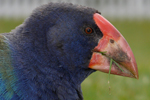
(03/25/2013) Around 4,000 years ago intrepid Polynesian seafarers made their way into an untamed wilderness: the far-flung Pacific Islands. Over a thousands or so years, they rowed from one island to another, stepping on shores never yet seen by humans. While this vast colonization brought about a new era of human history, it also ended the existence of well-over a thousand bird species according to a new study in the Proceedings of the National Academy of Sciences (PNAS).













